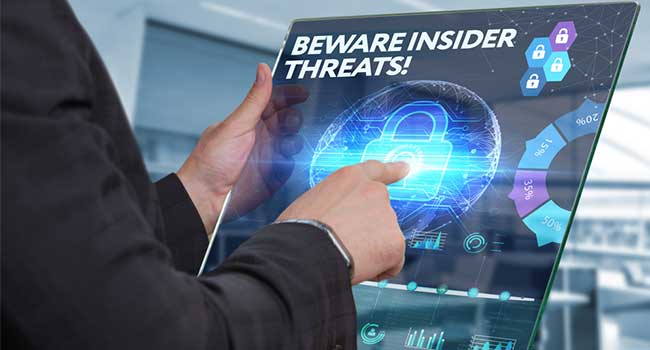
Minimizing IP Theft and Insider Threats During Times of Layoffs
- By Chuck Randolph
- May 04, 2023
In 2022, the tech industry experienced a 649% increase in layoffs. Even before the close of the first quarter of 2023, more than 100,000 employees at US technology companies have been let go. If layoffs persist, particularly in the tech sector, organizations could be at an increased risk of theft of intellectual property (IP).
Employees that perpetrate these risks can have a range of motivations, including a feeling of specific ownership over a piece of IP they worked on and wanting to keep it for their files to replicate at a future job, revenge, or financial motives such as selling the IP to rival companies or foreign countries.
In addition to serious financial repercussions, misappropriation of an organization's work can lead to reputational damage, loss of competitive edge, and business disruption. Furthermore, during heightened geopolitical disarray, the ability of a group or individual to acquire intellectual property and trade secrets can have ramifications on the economy and potentially national security.
With the current uncertainty of the future economic outlook, it's worth discussing ways companies can minimize insider threat risks.
Involving Security Teams Early
Proactivity is key. Workforce reductions don't happen in a vacuum. While they may seem sudden, they are often the result of lengthy planning processes among stakeholder groups from across the organization. Security teams should be included in these discussions from the beginning. Still, security teams are often not included or brought into the conversation so late that they cannot help with mitigation strategies. Involving security in preliminary plans allows them to monitor for behavior that may not raise alarms during "normal" times but may be unusual in the context of job cuts.
Earlier discussions with a security element also allow for proactive planning, data-sharing, strategy creation, and investigations, if necessary, to mitigate threats proactively. Collaboration between critical departments like security and HR is vital to producing a thorough plan which will ultimately help teams to see around corners and address any blind spots.
Physical security teams might need to be more familiar with particularly sensitive projects that other groups have insight into. IP theft mitigation should involve identifying information vital to the enterprise's future and pre-planning exercises on what happens if it is stolen or misappropriated.
Connecting Cyber and Physical Teams
When we think of traditional physical security, we usually think of the 3Gs: guns, gates, and guards. In protecting against IP theft, security professionals must shift their mindset to the organization's current needs and consider the 4th G: Gigabytes.
IP theft is traditionally considered a "cyber" issue. However, data sharing and collaboration between physical and cyber teams can provide critical intel into potential IP theft and help proactively identify signals. With the sophistication of today's threat actors, companies can't only defend with a "cyber only" approach. In a recent report, 35% of respondents said because of an inability to successfully collect, collate and share information across physical security, human resources, cybersecurity, IT, and legal and compliance departments, insider abuse authorized cyber access led to property theft or supply chain damage.
Building out cross-functional collaboration between cyber and physical security teams will create a more unified approach, where a common language is established to better understand each department's key priorities and processes. Doing so ensures there is collective monitoring of identified risk groups or individuals. It also ensures that any information is shared across security departments, ultimately assisting in communicating any threats or risks promptly and consistently. During times of turmoil at a company, such as when a layoff occurs, the ability to act proactively and collaboratively is more crucial than ever.
The Protection of Culture
As you know, collaborative, proactive cultures that foster close working relationships between departments are essential to managing a company during times of uncertainty. But those relationships must be built before storm clouds form on the horizon.
Security teams can have a role to play in developing company culture by creating and fostering a proactive mindset that safeguards people, company data, and assets. They can be advocates for robust services that ensure a soft landing for impacted employees.
But a robust protection culture can, and should, be further leveraged with technology that organizes data from across the institution, creating a shared understanding of risks. From logging incidents and tracking cases to researching threats, a technology-enhanced risk strategy will create an 'always on' intelligence mantra that supports identifying insider threats and IP thefts.
During times of uncertainty, enacting proper security measures to identify risks proactively can help to minimize the number of incidents of IP theft and insider threats.